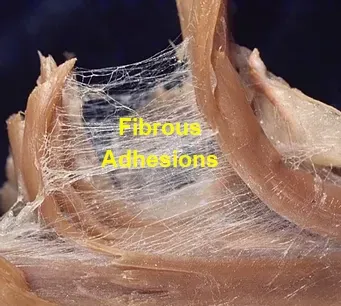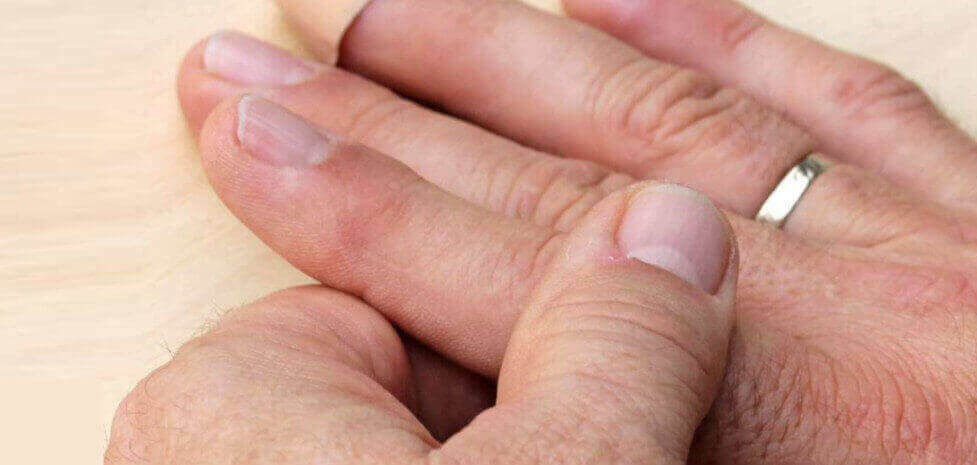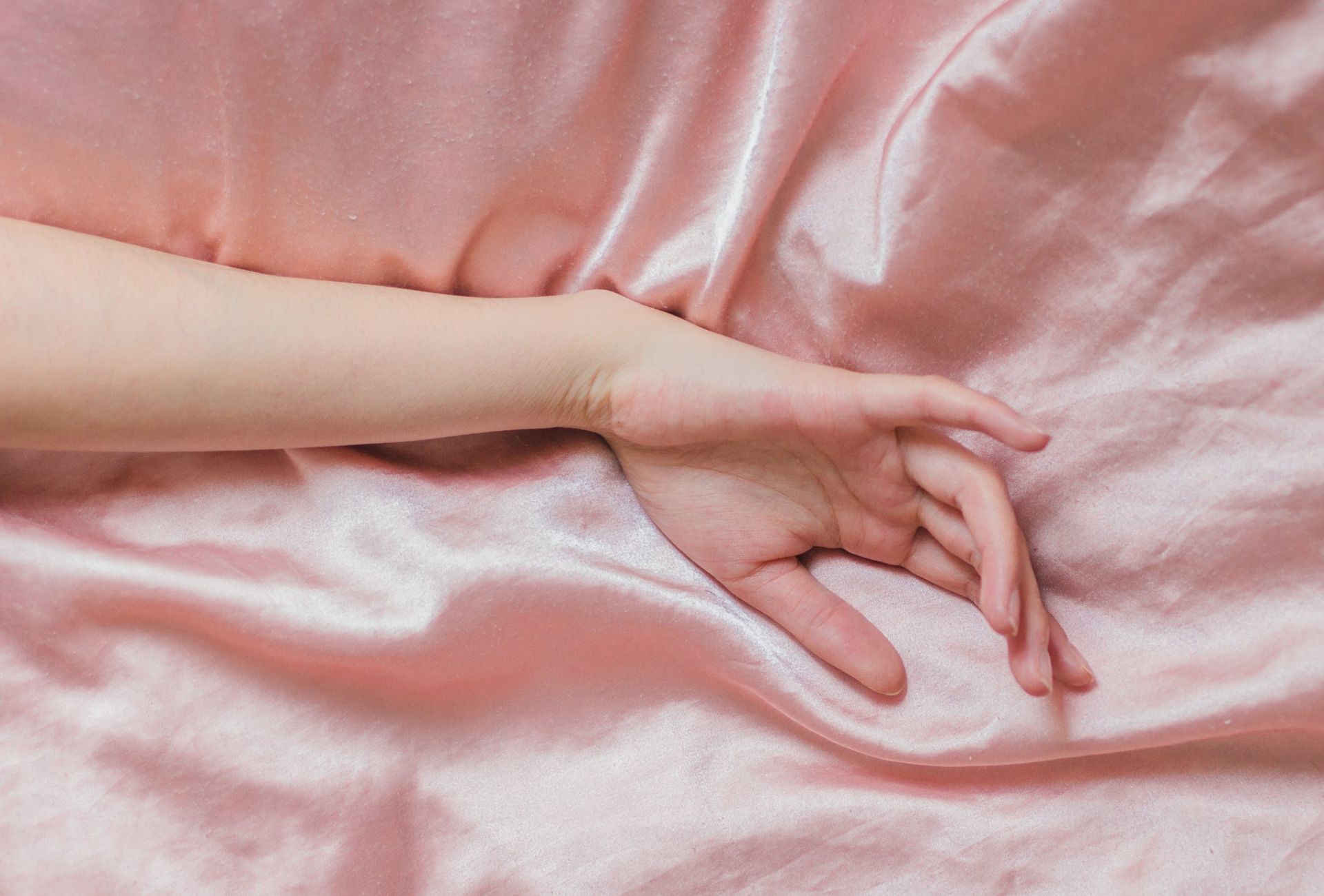How are Knitting & Hand Pain Linked?
Table of Contents
- Overview
- How knitting & hand pain are related
- It's all about repetitive stress on tendons
- Tendonitis
- Carpal tunnel syndrome
- Microscopic "rip & repair" process in tendons
- Why your pain needs attention
now
- What to do for knitting & hand pain
- Brace at night
- Rest your hand
- Exercise your fingers & hand
- Use myofascial massage
- Prevent knitting & hand pain
- Summary
- FAQs
- About
Overview
Everyone who knits knows that knitting & hand pain are usually closely associated. It's a shame that hand pain can chip away at such a deeply relaxing activity. A famous quote about it says, “In the rhythm of the needles there's music for the soul.”
All people who knit, sew, crochet, etc. share this sentiment. They also understand their passion can be the source of hand pain. That’s because maintaining that musical rhythm produces “repetitive stress” on your fingers.
The human hand is not designed for repeating small movements quickly and repeatedly - sometimes for hours on end. As a result, it causes stress in the soft tissues, resulting in hand or finger pain.
How knitting & hand pain are related
It's all about repetitive stress on tendons
Sewing, crocheting, knitting & hand pain go hand in hand. (Sorry, but the pun is accurate.) Devotees know this from experience. The pain is a type of injury that results from repetitive stress or strain. That's where we get the term
Repetitive Stress Injury
or RSI.
There are many types of RSIs. In fact, there are many
harmful activities when it comes to using your hands. Generally, when it comes to the hand, the most common repetitive strain injury is
tendonitis. This condition is relatively
easily treated. A sister condition is
carpal tunnel syndrome. Unfortunately, it's not as easily treated.
Tendonitis
Tendonitis symptoms can occur anywhere from the fingers so the elbow. They can be on the palm-side or knuckle-side of the hand - or both. Usually, a tender area or "hot spot" produces pain when touched or pressed.
Tendonitis symptoms usually occur while trying to perform an activity. The symptoms include pain, numbness, and tenderness -especially when touching, rubbing, or pressing the affected area.
Carpal tunnel syndrome
Symptoms of carpal tunnel syndrome occur mostly in the palm of the hand and fingers. They are
pain,
numbness, tingling,
shooting electric shocks,
burning,
weakness, and clumsiness.
Symptoms usually start out at night only, making it difficult to sleep. As carpal tunnel advances, symptoms appear during the daytime when
performing certain tasks.
Carpal tunnel syndrome "technically" in not an RSI. That's because carpal tunnel is not "caused" by repetitively stressing your hand; it just happens while doing so. In fact, carpal tunnel syndrome is
a form of tendonitis inside the carpal tunnel of the wrist joint.
Microscopic "rip & repair" process in tendons
The pain you get from all repetitive stress results from
microscopic rips along the tendons of the fingers. According to the
National Institutes of Health, scientists do not know for certain why this happens in some people but not in others.
But the problem occurs when the body tries to heal those rips. As a result, tiny scars or
adhesions form on the tendon’s surface. With more and more repetitive stress, those adhesions rip apart. Then, the body tries to repair them once again.
This microscopic "rip-and-repair" process continues over and over again as you work with your hands. Consequently, the body interprets it as irritation and tries to heal it. Therefore, the area inflames and swells with fluid as a way to protect the healing process. That inflammation is what produces the pain you feel.
This inflammation due to constant microscopic rip-and-repair of tendons is the underlying pathology in tendonitis and carpal tunnel syndrome.
When the inflammation occurs inside the carpal tunnel space,
something else also happens. The inflamed and swollen tendons push against the adjacent
median nerve. In fact, the pushing slowly crushes the nerve. It's that nerve crushing that produces all of the symptoms of carpal tunnel syndrome.
So in addition to the pain of tendon inflammation, the crushed nerve produces a host of
other symptoms, like numbness, tingling, shooting electric shocks, and burning in the fingers and hand. Often, hand weakness and clumsiness also occur. These are the most common
carpal tunnel symptoms.
Why your pain needs attention
now
Repetitive Strain Injury develops over long periods of time. In fact, tendonitis (and carpal tunnel syndrome) occur so slowly that they often go unnoticed in the beginning. Then they continue to progress.
Usually, once you’re even aware of the symptoms, the pathology has advanced relatively far. This is especially true with carpal tunnel syndrome because it also results in damage to the median nerve.
For this reason, if you're knitting and hand pain becomes a problem, don't wait for it to worsen!
If knitting & hand pain are causing problems at the moment:
- The first thing to do is make sure the pain is due to a simple RSI like tendonitis and
not carpal tunnel.
You can take this self-test to tell the difference between
carpal tunnel & tendonitis.
- If it IS carpal tunnel syndrome,
start to treat it now - because it can worsen quickly. Carpal tunnel syndrome is much more serious and requires special attention.
What to do for knitting & hand pain
If you’ve determined your knitting & hand pain issues are due to tendonitis or even carpal tunnel syndrome, what next? Actually, you can do a lot that will help you a great deal.
- For TENDONITIS, follow the combination therapy listed below. It includes Bracing, Rest, and Exercise. To be effective, you must do all of 3 them simultaneously.
- For CARPAL TUNNEL SYNDROME, follow the same combination therapy listed below. It includes Bracing, Rest, and Exercise. It also includes
Myofascial Massage (also described below). To be effective, you must do all of 4 them simultaneously.
Brace at night
Rest your hand
Exercise your fingers & hand
Use myofascial massage
Prevent knitting & hand pain
It's better to
prevent hand pain so you don't have to
cure it. Therefore, it's prudent to take measures to prevent wrist tendonitis or carpal tunnel syndrome in the first place.
There are a few simple things you can do
now
to avoid suffering later.
- Make sure you take frequent breaks from knitting. (Hand pain is best avoided with rest.) Put the needles down and stretch your fingers, hands, wrists, and shoulders as often as you can. See this article about
stretching exercises for carpal tunnel.
- Avoid marathon knitting sessions. Prolonged hand activity is just asking for trouble. Indeed, a marathon without adequate resting and finger stretching will
guarantee
problems.
- Before you begin to knit,
warm up your hands. Start by stretching them out. Also include your arms and shoulders – much like an athlete does before an activity. The benefits of stretching are tremendous and should be part of your knitting routine.
- To keep knitting & hand pain from ever happening, pay attention to your
posture. While it may not seem related, proper sitting posture is essential for good hand health. For instance, drooping shoulders and a bowed head transfer undesirable, unbalancing forces to the hands. It also inhibits blood flow to the extremities. In fact, poor posture can impinge directly on nerves in the hand and arm.
In conclusion, making a few easy adjustments to your knitting routine should result in healthy hands while you work.
Summary
Most say that knitting & hand pain are like bread and butter; always occurring together. But it doesn’t have to be that way. You can avoid the most serious hand pain problems like tendonitis or carpal tunnel syndrome by taking simple precautionary measures. And if you already have one of these painful conditions, you should treat it right now before it worsens.
FAQs
My symptoms are mild. Do I need to worry?
You should be concerned that symptoms could escalate at any time, especially if you continue knitting. Take precautions against carpal tunnel from advancing by doing stretching exercises often.
Is a routine of knitting for 30 minutes and then stretching for 3-4 minutes sufficient to prevent symptoms from worsening?
Generally, if your symptoms are still mild, this should be enough to keep them from advancing.
What if my symptoms are very severe?
You will need to discontinue knitting until you get symptoms under control.
About








